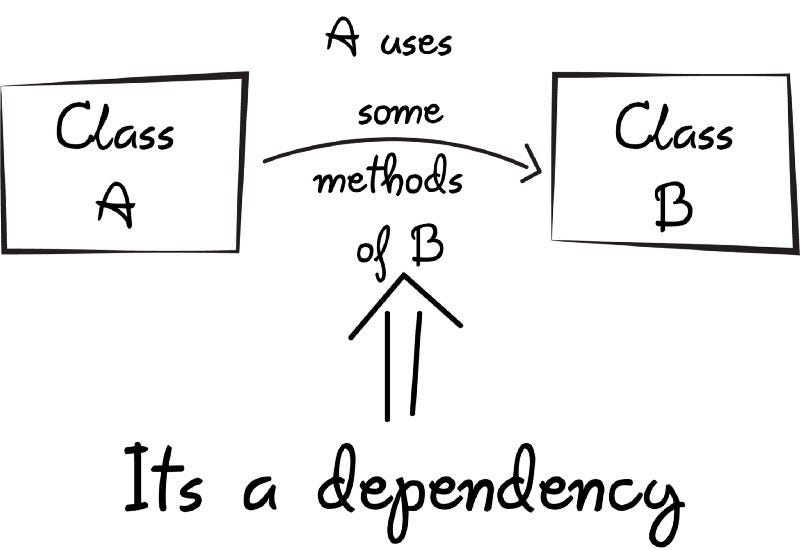Update Your Dependencies: The Most Critical Part of Your Infrastructure
Dependencies support software and give them a nice appearance and feel. Let's look at some of the dangers posed by outdated dependencies and how to address them.

Dependencies support software and give them a nice appearance and feel. For instance, if you've built an application and want to change the typeface, you can use the bootstrap files as dependencies in the application. As a result, the company guarantees that it has a well-defined plan of action before implementing it. Let's take a closer look at them.
What Are Dependencies?
The word dependency means "to be reliant on someone or something". Similarly, in software development, when a code snippet is dependent on another snippet, it is referred to as a dependency.
So, whenever a software wants a certain functionality, it can be implemented using dependencies, but only when business requirements approve it. For example, a programmer could use JavaScript to import code validation in any programming language. As a result, anytime programmers compile JavaScript code into the main program, it is evident that the main program is reliant on JavaScript code.
Dependency can be defined in a variety of ways, including:
Finish-to-start
The most common sort of dependency is one in which the predecessor task must be finished before the successor may begin. As a result, the main program must come to a halt before the dependent snippet can be invoked. To generate a JWT token, the user inputs must first be analyzed, after which the JWT token will be generated.
Start-to-start
The main program must have started before the dependent snippet, and neither task's completion is calculated in this situation. There is no requirement that the main program and dependent programs be affiliated with the same organization or group.
Finish-to-finish
The main program will only finish after the dependent program has been completed, but the main program will not start until the dependent program has been completed. Depending on the commencement time, the main program can begin before, after, or simultaneously.
Why Are Dependencies Important?
Although some dependencies cannot be managed, businesses continue to utilize them because they provide benefits such as monitoring a program's timetable and allowing developers to construct their own version from an existing application. As a result, creating new code that replicates functionalities that already exist is a complete waste of time.
Complex architectures, such as microservices, are being used with increasing frequency in applications. In short, application complexity has increased in comparison to even a few years ago. In such a complex but fast-paced environment, it becomes very difficult for a developer to progress if they develop everything from the initial concept. That is why they rely on code snippets. It makes app building easier for them.
Managing Dependencies
It can be quite time-consuming to check the current version of dependencies that are being utilized. However, if they are ignored, they might pose a threat to the company and become the source of the application's end.
To help with this, WhiteSource has created an application that can automate dependency changes. WhiteSource Renovate continuously runs and detects available updated versions of dependencies. It can be connected with GitHub to scan all the dependencies and their updated version. It works efficiently and secures you from vulnerabilities that may arise due to your use of older versions of the dependencies.
How Do Developers Choose Dependencies?
First, the developer examines the dependent snippet’s functionality to see if it meets their requirements. If it does, they proceed. Now they have to integrate the dependent code into the main program, build it, and check for errors. If an error arises, they begin debugging the code and eliminating both snippet mistakes. They then check to see if they are obtaining the desired outcome.
As a result, the developer saves time that can now be spent on creating other functionalities. The popularity of “Python” can be attributed to its dependency feature. In Python, programmers can import snippets that they have already created or that have been created by others. Developers may create complicated apps in a matter of days using this functionality or by importing libraries.
What Threats Can Outdated Dependencies Pose?
Dependencies can prove dangerous and require additional work, procedures, services, and software. The biggest issue with dependencies can be if it is outdated. Let's look at some of the dangers posed by outdated dependencies:
Availability Issues
Sometimes dependencies that have been directly included in the code from the internet may cause issues. For example, the hosting services of the dependency may become unavailable, which may cause problems to the end-user.
This can be better illustrated with an example. Let’s say you develop a software that uses Google Maps for mapping, and the Google server goes down for an extended period of time. Because you're using Google Maps, you depend on Google’s server always being available for your application. In a scenario where the dependency has network troubles, electrical issues, or server issues, your software gets affected as well. If the main program does not get input from the dependency, it will halt execution for that time.
Must Check the Version of Dependent Snippet
When a developer selects a dependent, he must first examine the dependent's version and then the vulnerabilities that exist in that version. In some cases, obsolete versions have major vulnerabilities that can lead to the server becoming compromised or other malicious activities taking place. The severity of the threat is determined by the information that has been compromised.
Each new version comes with its own set of new features that the developer must test. It might be able to improve the functionality. However, before updating to the current version, make sure to check whether the new version supports your main code. Otherwise, it can cause a compatibility issue.
For example, let’s say there is a dependency that has the remote code execution vulnerability. If you use it, that will introduce the vulnerability into your environment, servers, and assets too, which then are at the risk of being compromised.
Conclusion
Dependencies are an important aspect of infrastructure. They enhance the development process, save time, and boost the entire team's efficiency. There may be some dangers of using dependencies. But these can be mitigated to some extent by checking the library or online code before importing and utilizing it.
The easiest strategy to decrease risk and vulnerabilities while introducing dependencies is to create an "Effective RoadMap" and use tools to keep a regular watch for new vulnerabilities.


